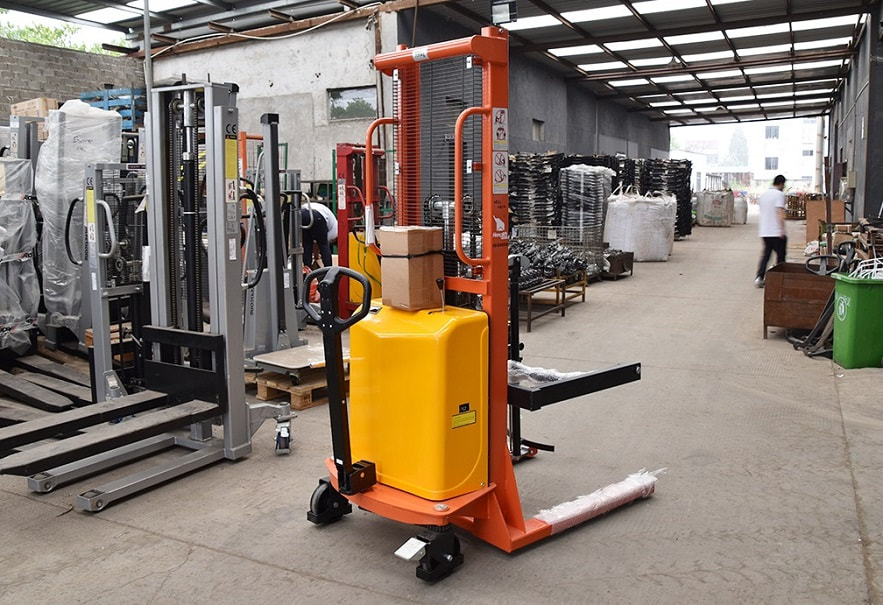There are many pieces of material handling equipment that can help 3PL facilities handle and process their shipping operations. Some of these pieces of equipment are well-known and commonly used, while others, not as much. One such piece of material handling equipment are pallet stackers. Pallet stackers are versatile and functional, which makes them a great addition to any 3PL facility. Whether you're purchasing your first pallet stacker, or you want to replace an old, worn out one, determining the ideal replacement can be difficult, which is why you need to take a few factors into account before making your final decision.
First and foremost, you'll come across electric, manual and semi electric pallet stacker models. When trying to decide between the three types, consider your workflow optimisation needs. If you're going to use it only occassionally, then you're probably better off with a manual pallet stacker. If you're going to use it more frequently, then you're probably looking for a semi electric pallet stacker. However, if you need a work-horse machine, then you're best off with an electric model.
Next, you have to consider the weight and height capacity. The weight capacity is determined by the minimum and maximum loads you intend on lifting and moving. The height capacity, on the other hand, refers to the maximum height the stacker can reach. Generally, the higher the stacker can go, the smaller the weight it can carry. With that said, you need to consider the height of your racking system and the loads of the items you're going to lift when determining these factors.
Then, you have to consider whether you want a counterbalanced stacker or a base leg stacker. Although very similar to each other, there are some key differences. Counterbalanced stackers are capable of operating in narrow aisled, simply because they don't feature straddling legs outside the main body. This also allows them to lift standard pallets and they feature the highest lift ratings. Base leg stackers, on the other hand, support weight by utilising base legs to carry over the load. These stackers are ideal for stacking pallets and servicing racks.
Lastly, consider whether you want a fixed or an adjustable straddle. The legs on fixed straddle stackers have a predetermined width. So when buying a fixed straddle stacker, make sure the inside dimensions of the legs are greater than the largest pallet's width. Adjustable straddle stackers, on the other hand, as their name implies, allow you to adjust the width of the inside dimensions of the legs.
Next, you have to consider the weight and height capacity. The weight capacity is determined by the minimum and maximum loads you intend on lifting and moving. The height capacity, on the other hand, refers to the maximum height the stacker can reach. Generally, the higher the stacker can go, the smaller the weight it can carry. With that said, you need to consider the height of your racking system and the loads of the items you're going to lift when determining these factors.
Then, you have to consider whether you want a counterbalanced stacker or a base leg stacker. Although very similar to each other, there are some key differences. Counterbalanced stackers are capable of operating in narrow aisled, simply because they don't feature straddling legs outside the main body. This also allows them to lift standard pallets and they feature the highest lift ratings. Base leg stackers, on the other hand, support weight by utilising base legs to carry over the load. These stackers are ideal for stacking pallets and servicing racks.
Lastly, consider whether you want a fixed or an adjustable straddle. The legs on fixed straddle stackers have a predetermined width. So when buying a fixed straddle stacker, make sure the inside dimensions of the legs are greater than the largest pallet's width. Adjustable straddle stackers, on the other hand, as their name implies, allow you to adjust the width of the inside dimensions of the legs.

